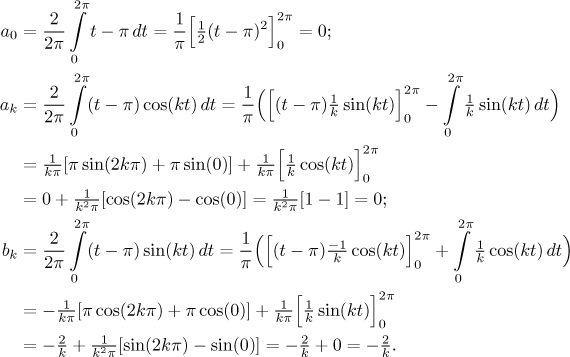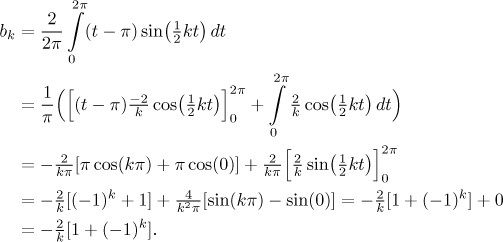Problem: For the following function find its Fourier series, its sine Fourier series and its cosine Fourier series; for each series, determine its sum.
![]()
Solution: This seems to be a standard problem, so we use the usual procedure.
Fourier series:
When we extend the given function periodically, its period will be

Thus we get

that is,

To find the sum of this series we use Jordan's conditions. First we draw the periodic extension of the given function f and then at all points of discontinuity we place dots at levels that average left and right limits there.

Sine Fourier series:
Actually, the Fourier series consists only of sines, so it is already a sine
series. Indeed, the periodic extension that we drew above was an odd
function, so this is automatic.
What would happen if we applied the standard procedure for obtaining sine Fourier series? We would eventually get the same answer.
We get the sine Fourier series by considering an extension of the given function
f to

Thus we get

Note that the expression

We obtained the same series as above. To determine its sum we would start by drawing an odd periodic extension of f, but note that in the picture above, the extension of f is already odd, so that picture still applies.
Cosine Fourier series:
Now we apply the standard procedure to find the cosine Fourier series. We
get it by considering an extension of the given function f to

Thus we get

Note that the expression

To determine the sum of this series we start by drawing an even periodic extension of f, then we should handle points of discontinuity, but since there are none, we know that the cosine Fourier series converges to this extension and this convergence is uniform on the real line.
